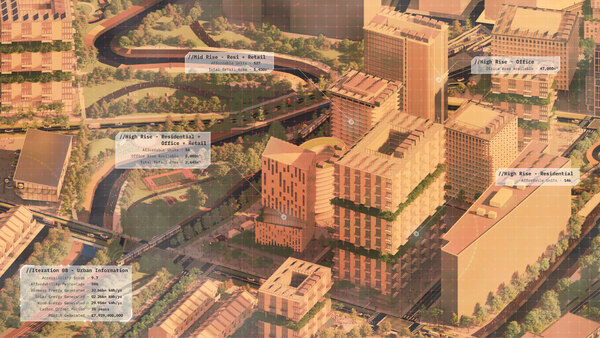Urban redevelopment endeavors to enhance deprived neighborhoods and foster urban prosperity. However, it can inadvertently trigger gentrification, displacing lower-income residents, while the infrastructure improvements associated with redevelopment may amplify the carbon footprint.
Through a thorough examination of the area's existing demographics, our analysis reveals a substantial risk of unwelcome gentrification stemming from the influx of affluent newcomers and the consequent displacement of lower-income individuals. In light of this, our thesis explores an urban redevelopment proposal that harmoniously addresses both socio-economic inclusivity and environmental sustainability, paving the way for a resilient future.
To confront these challenges, we devised a compact city scheme centered around Transit Oriented Development (TOD). Guided by Christopher Alexander's Pattern Language Theories and Hollings' Resilience theories, our approach seeks to reverse the historical tendency of unequal accessibility. We propose a unique configuration: a "mid-ring affordable zone" that concentrates amenities and gradually decreases their density as one moves towards the outer rings.
As a key contribution, we developed a computational tool enabling the testing of diverse iterations generated from user inputs, urban grid size, density, and program ratios. This tool facilitates comprehensive analysis encompassing affordability, accessibility, and environmental sustainability on both urban and building scales.
Moreover, our project has yielded a web-based application tool, empowering users to visualize and compare various design iterations seamlessly on our website. Through analytical assessments and performance evaluations, this interactive design tool proves invaluable in fostering stakeholder collaboration to realize a socio-economically inclusive city. By prioritizing affordability of homes, accessibility to amenities, and environmental sustainability via zero-carbon residences and facilities, we lay the foundation for a more equitable and sustainable urban landscape. Additionally, we created an interactive design tool that would provide accessible metrics when applied to the site.


